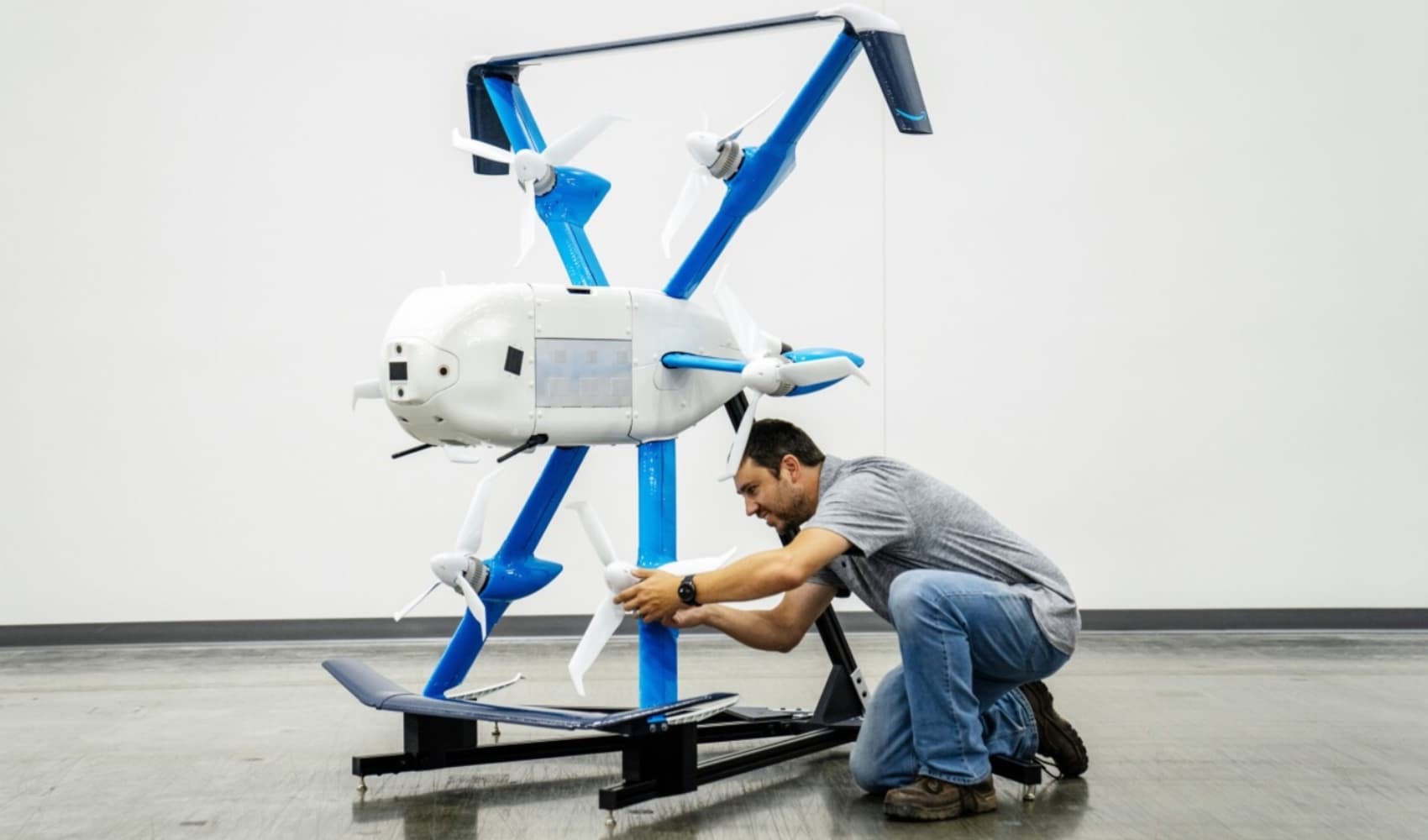Star Trek: The Next Generation and Caprica have, for years now, shown us devices that transport the characters who use them to virtual locales, while we the viewers sit and pine over the experience on our couches. Until now! All the components you need to build your own step-in virtual world are here!
First, let's settle on a model. Star Trek's holodeck, a room which can fool all five senses of those who enter as to immerse them in a world of their own choosing — whether it's a scene from Robin Hood or from the pages of Sherlock Holmes — is larger and more famous. We'll build that one. Sound impossible? Well, maybe not anymore.
1. A Reasoning Computer
In Star Trek: The Next Generation, characters walk up to the outside wall of the holodeck and announce what they would like it to create before entering. We'll want the same as we approach our own. We need to have a computer that can track meaning and subtlety in human communication. Good thing IBM's Watson was just on Jeopardy!
While delivering a start-stop performance on the show, Watson is proof positive of a computer's ability to reason out the nuance of human communication. Sure, some people would like Watson to be used in the medical field, but we're talkin' holodeck here, people!
One shortcoming of Watson, intuitive as it is, is the lack of a microphone (IBM had to feed Watson text instead of audio, in fact). That brings us to our second component.
2. Audio Recognition Equipment
Tech
Up above you can see a mock-up of the usual holodeck control panel in the Star Trek universe. No one uses that, though — all the cool crewman know to use the audio commands.
Sure you can just snap a microphone on Watson and call it a day, but why limit ourselves to that when there's a fancier solution — like, say, the Xbox 360 Kinect. Slap that puppy in the mix and you have a facial recognition camera that also incorporates your vocal commands. Got a favorite game? The computer might even suggest it to you when you walk up, thanks to Watson adding the ability to think and talk.
With these two set up at the door and controlling the internal environment, I think it's time to go inside.
3. iSmell… Something
Wait… am I admitting to poor hygiene, or do I mean that failed USB peripheral from ten years ago? Brace yourselves, because it's the latter.
Sure appearance is important, but the Social Issues Research Centre (SIRC) based in Oxford, UK has released reports stating that "our olfactory receptors are directly connected to the limbic system, the most ancient and primitive part of the brain, which is thought to be the seat of emotion."
In fact, by the time our mind registers a particular scent, our olfactory center has already run the data through our emotional core and decided how we should feel about what it is we smell. Enter the iSmell. This misutilized little thing was supposed to give off scents that corresponded to emails and ads. Uh, who buys a scent-concocting device so that they can improve their commercial experience? Boom. Holodecked.
PS, think an out-dated thing like iSmell won't work? Pick up one of the new prototypes on display at the Keio Techno Mall in Ginza, Japan.
4. Flexible, No-Glasses 3DTVs
Okay, now that your nose tells you that you love the constructed environment you've created for yourself, what does it look like? Um, we'll need it to be 3D, duh, and I'd rather we not all look like Geordi La Forge for that to happen.
Toshiba's 3D sets, showed off last October, utilize nine color pixels in groups of nine of each color and a lens placed in front of them that scatters the light in nine different directions. In short, these babies bend light to reach your eyes at different times, creating a 3D image. Visor (or glasses) not included — or needed.
Problem: when you sit in front of the current Toshiba 3DTV, the center of the screen is a lovely 3D image, but the sides, being minutely farther away don't work as well. Fine. Let's bend the TV and curve our room to compensate. After all, we're ordering the biggest screen they've got, supplying us with our walls.
Still think HDTVs can't bend to suit a curved wall? Check out OLED displays, old-timer.
5. Holographic Projectors
Looking around, we still need to add some detail to our 3D world and what better way to do so than with holograms? Embed some holographic projectors in the floor of your holodeck and all of a sudden you have chirping birds and butterflies flitting about.
Just last month, researchers at MIT achieved 15 frames-per-second (FPS) in live motion-capture holograms. What's more, they're confident that they can soon double that to reach the 24 FPS of films or the 30 FPS of TV. At those frame-rates, the brain is tricked into the perception of fluid motion. Oh, and they did all this with a single Kinect camera.
Want even better holographic content? Tokyo University researchers have, since the middle of 2009, been touching and interacting with their holograms through what they call the Airborne Ultrasound Tactile Display.
6. A, Erm, Cyber(sex) Suit
Whoever said that the porn industry never gave to society? As far back as 2003, U.S. patents have been taken out for a tactically-interactive body suit by members of the porn community. Sure it's taboo, but these things are full-body covers and provide tactile feedback. Basically they correctly gauge the distance between you and an image. Once you get close enough to touch an object, the suit simulates the density of it through tiny motors that provide resistance to your muscles. Imagine picking a holographic orange and having it press back against your hand as you peel it.
Thank you, porn.
7. Motion-Capture Hardware
The usual way to go about capturing motion for films and video games is to put a bunch of light-reflecting balls all over someone, as seen above. That sounds as jeopardizing to our immersion as 3D glasses, so let's see what else we can do.
Kinect cameras have been coming in handy — let's put them to work again. We used them for vocal interface and visual user accounts outside. Inside, we're cranking them up a notch. By triangulating your body between three cameras which do facial recognition, we can tweak them to not only tell the room how you're moving through it, but to create an accurate, 30 FPS version of yourself. Why? 'Cause it's awesome! You could even project a live, accurate version of yourself into your buddy's holodeck across the Internets!
Uh, also don't walk out of their playing field or your room crashes. Don't worry, we've got you covered in #8.
8. A Never-Ending Floor
This is the Cyberwalk, an omni-directional treadmill upon whose site it is actually recommended for use in a holodeck — perfect. The treadmill responds to your movements, changing its direction and speed to match that of its user. Kinect play-space issues: over. The U.S. army also has what looks like a suped-up model of the same thing, so let's hope they release it for our use.
One issue: I don't remember the floor of the pleasure planet Risa having the same paneled flooring as a clipper ship. That means our floor isn't up to snuff — yet.
9. Interactive Floors
I remember a children's museum when I was a kid that had a room where my footprints wouldn't disappear behind me. Way more useful is this interactive floor from RichTech. Finally a holodeck experience my feet can be proud of!
The device basically amounts to an iPad the size of your floor on which you can move grass and sand and the like. They use motion-capture and a projector for their images, but we can up the ante there, can't we? Our motion capture is taken care of, but we'll sub in strips of our flexible OLED TVs on the panels of our Cyberwalk to create our images. Then our cyber-suit will tell us how the pebbles we're walking on feel.
10. Surround Sound (Literally)
I don't know about you, but all that visual for a silent holodeck sucks. Just released in January from DTS is the company's new 11.1 (yes, it really does go to 11) Neo:X surround sound system which "drops you right in the middle of the instrument". While some might mutter that this is designed to be a stationary set of speakers, I will respond that you'll want the birds to be chirping from the same tree, even if you turn around. The best part of this work of art? It's already calibrated to function with 3D systems.
There you have it! Now get out there and start constructing — I want to be hunting wild targ on Qo'noS by Saturday!
For the latest tech stories, follow us on Twitter at @dvice



